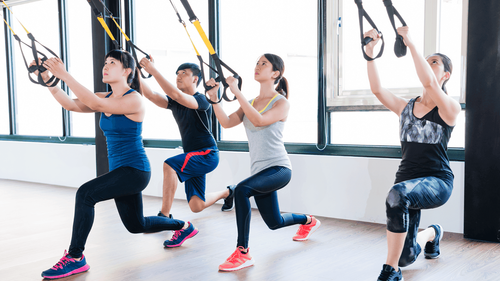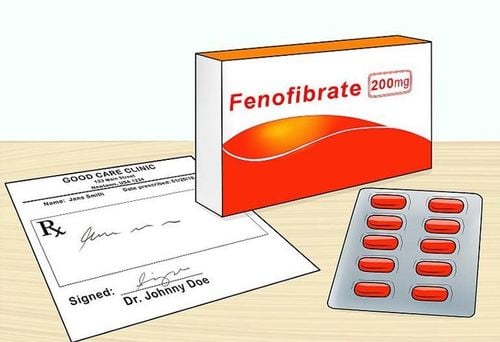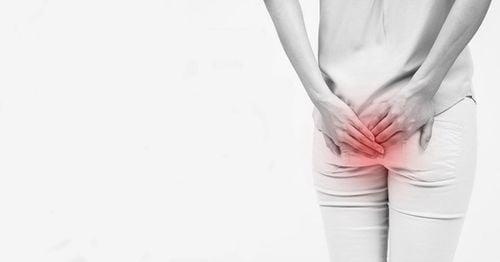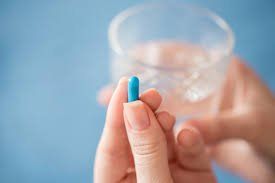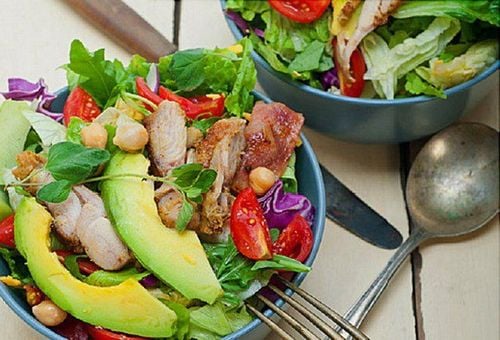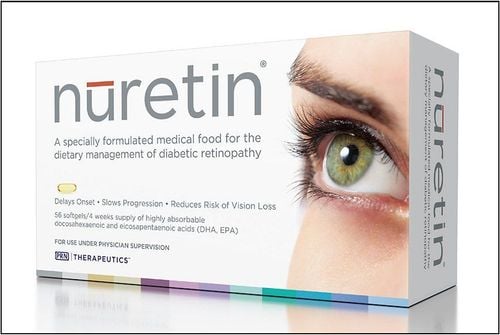This is an automatically translated article.
Two important factors to gain muscle and lose fat are exercise and nutrition. To maximize results from the gym, you need to pay attention to your diet. The wrong tolerance to the menu to gain muscle and lose fat will hinder you from achieving your training goals.
1. Two phases of muscle gain and fat loss
Gaining muscle and losing fat is the desire of many people, helping to maintain a fit and toned body. To do this, many bodybuilders begin to eat and exercise according to the mode of muscle loss (Bulking) and muscle tightening (Cutting).
The muscle release phase can last from months to years. In it, you need to follow a muscle gain and lose fat menu rich in calories and protein, combined with weightlifting to build as much muscle as possible.
The muscle mass phase focuses on losing as much fat as possible, while maintaining the muscle mass that was developed during the previous lean phase. At this point you need to make specific changes in diet and exercise to lose body fat, lasting for a period of 12 - 26 weeks.
2. Calories and nutrition in the menu to gain muscle and lose fat
2.1. Calorie requirement
In general, a fat loss diet is about increasing muscle mass during the lean phase, and decreasing body fat during the tightening phase. Therefore, you need to consume more calories in the early stages. The easiest way to determine your calorie needs is to weigh yourself at least 3 times a week and record what you eat with a calorie tracker app.
During the lean phase, experts recommend an average calorie increase of 15%. For example, if you normally eat 3,000 calories per day, you should eat 3,450 calories per day (3,000 x 0.15 = 450) during the lean phase.
When moving into the muscle contraction phase, you need to reduce your average calorie intake by 15%, or 2,550 calories per day. You will have to adjust your calorie intake each month to match your current weight.
In both phases, it is not advisable to lose or gain more than 0.5 - 1% of body weight per week. This ensures you don't lose too much muscle during the flush phase or gain too much fat during the squeeze.
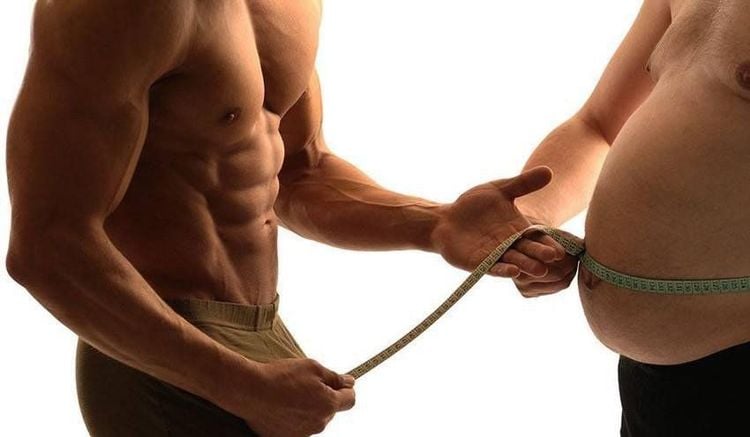
Tăng cơ giảm mỡ cần tiêu thụ nhiều calo
2.2. Macronutrient ratio
Once you have established the right number of calories, you can determine the ratio of macronutrients, between protein, carbohydrate and fat . Unlike calorie needs, this ratio will not change during both the discharge and the contraction phases. Protein and carbs contain 4 calories per gram, while fat contains 9 calories per gram.
Experts recommend getting:
30 - 35% of calories from protein; 55 - 60% of calories from carbs; 15-20% of calories from fat.
3. Diet to gain muscle and lose fat
3.1. Target
In addition to exercising according to the program proposed by the coach, you also need to focus on your diet to increase muscle and lose fat. Careful meal planning not only helps bodybuilders achieve their training goals, but also keeps them healthy.
In addition, following a healthy weight loss and muscle gain menu, which includes a wide variety of "super-nutrient" dishes from all food groups, in appropriate amounts, has the potential to significantly reduce risk chronic diseases, bring many health benefits.
3.2. The protein
The most important nutrient in a healthy fat loss diet is protein. Muscle is made of protein, without protein most of the excess calories in the body are fat. Studies show that a high-protein diet causes many of the excess calories to be converted into muscle.
Like training, diet is an important part of your fat loss goals. Eating the right foods in the right amounts will provide your muscles with the nutrients they need, promote recovery after workouts, and grow bigger and stronger. On the contrary, consuming the wrong food or not in sufficient quantity will not bring good results.
The foods that you eat do not need to change between the period of muscle loss and muscle contraction, usually you just need to adjust the portion accordingly. Items that should be included in the menu to gain muscle and lose fat include:
Meat, poultry and fish: Beef tenderloin, ground beef, pork tenderloin, venison, chicken breast, salmon, tilapia and cod; Dairy: Yogurt, cottage cheese, low-fat milk and cheese; Grains: Breads, cereals, crackers, oatmeal, quinoa, popcorn and rice; Fruits: Oranges, apples, bananas, grapes, pears, peaches, watermelons and berries; Root vegetables: Potatoes, corn, chickpeas, green beans and cassava; Vegetables: Broccoli, spinach, lettuce, tomatoes, cucumbers, zucchini, asparagus, peppers and mushrooms; Nuts: Almonds, walnuts, sunflower seeds, chia seeds and flax seeds; Legumes: Chickpeas, lentils, kidney beans, black beans and pinto beans; Oils: Olive oil, flaxseed oil, and avocado oil.
3.3. Food supplement
Many bodybuilders also take supplements, including:
Whey protein : Consuming whey protein powder to increase muscle mass and lose fat is an easy and convenient way to increase protein intake; Creatine: Creatine provides muscles with the necessary energy source, of which creatine monohydrate is most effective; Caffeine: Caffeine reduces fatigue and helps you train harder. This substance is found in sports drinks, coffee or tea; Vitamins and Minerals: May be helpful if you're restricting calories and trying to lose fat during your lean phase. A protein supplement in the form of whey protein can also be helpful if you're not getting enough protein-rich foods in your diet. In addition, avoid or limit alcohol, sweet foods high in sugar and fried foods.

Whey protein giúp tăng cơ giảm mỡ
4. Lift weights and improve strength
To improve fitness and health, you can start with simple cardio exercises that focus mainly on burning calories and reducing excess fat.
Next, lifting weights is a way to ensure that the calories you take in from your fat loss diet go to your muscles instead of your fat cells. Go to the gym and lift weights 2-4 times a week, trying to gradually increase the weight and build endurance over time.
If you are a beginner, practice with a qualified coach for better support. People with bone disease or any medical problems should consult their doctor before starting exercise.
Each person's body will have a certain weight, so the desire to gain muscle and lose fat will be difficult. In most cases, you need to try to strictly follow a diet to gain muscle and lose fat, combined with intense exercises. Changing weight in general, or gaining muscle and losing fat in particular, is a long-distance "marathon". This means that you have to persevere for a long enough time if you want to achieve your goal successfully.
Not only famous for its modern facilities that are standard in the medical examination and treatment process, but at Vinmec International General Hospital, there are also a team of doctors and nurses who have performed surgery to treat many difficult and complicated cases. . In particular, doctors are ready to listen, advise and treat diseases as well as advise on good nutrition and food for all ages according to the individual needs of customers.
Customers can directly go to Vinmec Health system nationwide to visit or contact the hotline here for support.
Reference source: healthline.com




